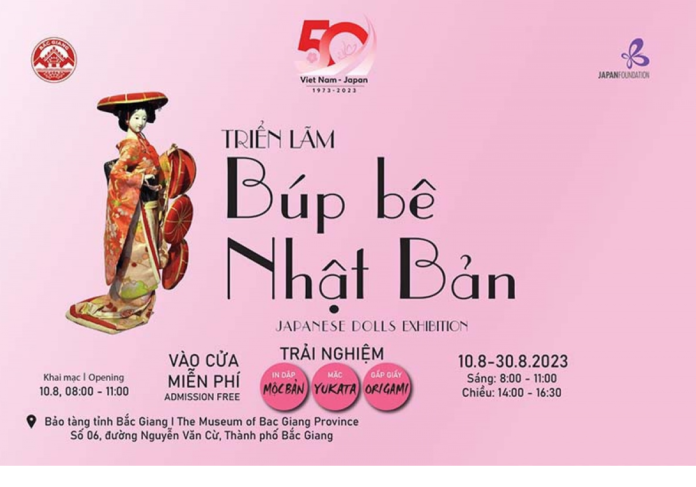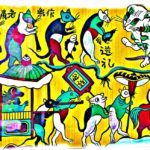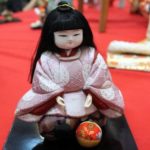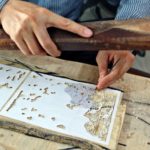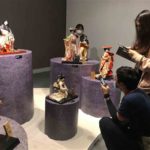The exhibition opened on August 10th, showcasing 70 Japanese dolls divided into two distinct spaces.
In one space, visitors can explore a collection of exquisite dolls depicting various characters in different settings, from everyday life to the theater.
Meanwhile, another space features a unique display of wooden dolls known as Kokeshi, provided by the Tsugaru Kokeshi Museum. Originating from the Tohoku region in 19th century Japan, Kokeshi dolls are commonly sold as souvenirs for children at the region’s hot spring towns.
Each town has its own distinct style of Kokeshi, characterized by unique patterns and techniques.
The exhibition includes 12 different types of Kokeshi dolls in various sizes, along with modern Kokeshi works inspired by Vietnamese culture. Five of these works specifically incorporate elements of Vietnamese culture.
Visitors will also have the opportunity to try on traditional Yukata clothes, learn the art of paper folding Origami, participate in woodblock printing, and even take home cute little paper dolls.
The exhibition, jointly organized by the Bac Giang Department of Culture, Sports and Tourism and the Japan Foundation Center for Cultural Exchange in Vietnam, will be open until August 30th.
Dong Ho paintings reveal Vietnamese unique folk culture
In the old days, Dong Ho paintings were used as decorations at every home in the northern delta during the Lunar New Year festival (Tet). Hanging a Dong Ho painting in the home at the beginning of a new year was believed to bring happiness and prosperity for the family. The folk paintings have become part of Vietnamese life through generations and are now used in the modern arts, including painting, sculpture, fashion and pottery.
Dong Ho painting – art of daily life
For centuries, Dong Ho paintings were used as precious decorations to celebrate the Tet festival. People bought the paintings to hang on their walls for a year, which are then replaced with new ones for the next New Year. Dong Ho painting was inscribed in the list of national intangible cultural heritage in December 2012.

